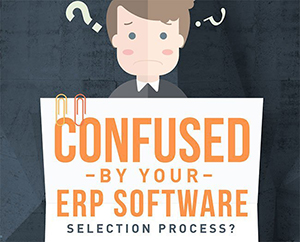Bring more skill to your stocktake: embrace cycle counting with SAP Business One
Discover how SAP Business One can bring new levels of sophistication to your approach to counting stock, which affects your ability to expand and meet customer demand.
The annual stocktake is the default approach to value your stock at the end of the financial year for tax purposes, check the accuracy of your inventory records, and reset for the year ahead.
Yes, inventory is an asset and you need to be able to report any write-offs in the right tax period.
But being able to trust that your systems and physical inventory align is absolutely essential for day-to-day trade, because it affects whether customer demand can be met.
That’s why accurate stock levels and effective stock handling processes are critical all year round.
SAP Business One is designed to make it easier for small to medium enterprises in wholesale distribution, retail, and manufacturing to manage inventory, reduce costs, and increase profitability.
Maximise the value of your inventory to boost sales and production
The materials, products or equipment you buy, assemble and sell are the lifeblood of your business, and inventory levels also impact cash flow. Knowing how much stock you’ve got and keeping your finger on the pulse of turnover rates or consumption is vital.
When the volume of stock you hold increases and your supply chain or production processes become more complex because your company is growing rapidly, can you really rely solely on a once-a-year inventory count?
An annual stocktake means you have to make sense of 365 days of transactions if any discrepancies occur, in order to see what went wrong. It can be extremely time-consuming, especially if you run multiple warehouses.
SAP Business One can support businesses where an annual stocktake is sufficient, but it vastly improves your capacity to introduce cycle counts for more immediate answers and less downtime.
Cycle counting is a process where you count small portions of your inventory on a more regular basis. By completing counts by item type or warehouse section—either daily, weekly or monthly—you don’t need to bring your whole operation to a halt to get a clear picture of stock accuracy.
Rolling counts enable you to check and refine processes, correct discrepancies, or deal with shrinkage in more easily managed chunks.
Continually monitoring stock levels in conjunction with customer management tools in SAP Business One also improves customer experience. Customers feel annoyed and apprehensive when stock-outs interrupt their buying journey, they aren’t given good alternatives, or worse still—they’re promised an item that you then can’t deliver.
Adopt perpetual stock counting like a pro with SAP Business One
SAP Business One gives your team the tools needed to embrace cycle counts.
When items are first entered in the system you can tag the material or product to indicate the type and frequency of the cycle count required. For instance, you might tag an item to show it’s high-value or high turnover.
You may want some high-value items counted more frequently, or you may prefer to monitor processes more closely when it comes to particular stock that turns over quickly because that will give you a better picture of how commonly inaccuracies appear.
SAP Business One sends you alerts when cycle counts are due, grouping items with the same tags and frequency to help you plan and manage your staff to undertake counts.
The solution also enables you to:
- Create a list of items as a paper list or spreadsheet to use for the physical count, either including quantities or not to support a blind count.
- Track multiple counts (first count and subsequent re-counts), including tracking which employees complete each count for complete accountability.
- Choose to refine counts using serial numbers or batch tracking codes stored in the system.
- Compare counts using an intuitive user interface that helps warehouse managers to see what’s happening, presents the total gains or losses and proposed stock adjustments.
- Post financial and inventory adjustments to record up-to-date counts.
[FEATURE ARTICLE – 5 Key priorities when choosing inventory management software]
Align inventory data and improve your entire operation with SAP Business One
An Enterprise Resource Planning (ERP) solution acts as a point of truth for your business because it unifies information and operations across all functions, allowing you to manage your business from one dashboard and make the most of your team’s time and talent.
An EY report on productivity in Australia found 70% of workers felt their productivity would improve if they had ‘faster access to more accurate data and analytics allowing them to make better decisions.’
Making data-driven choices comes down to both the technology you apply and the processes you put in place. That’s never truer than when it comes to inventory—being able to trust data in your system depends on an effective physical count.
Choosing SAP Business One helps you manage cycle counts with greater ease to get meaningful information about stock levels—so employees don’t have to second-guess what the system is telling them. That kind of certainty has a positive knock-on effect for procurement, sales, and production.
Because it’s a fully integrated ERP solution, SAP Business One also ensures inventory and financials are always aligned, and allows for a single customer view and more proactive purchasing and supplier management.
Want to embrace more effective stocktake procedures enhanced by SAP Business One? Our experienced consultants can help: call 1300 045 046 or email info@leveragetech.com.au.









Leave A Comment